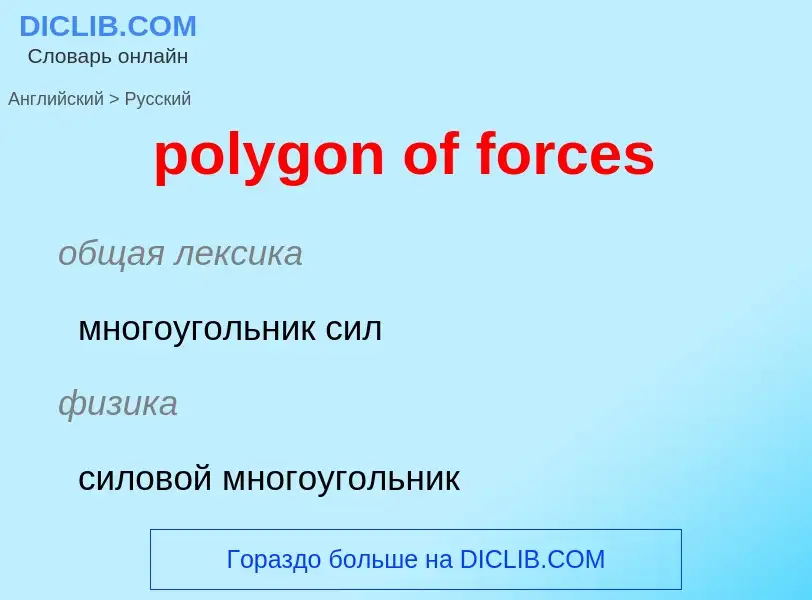Vertaling en analyse van woorden door kunstmatige intelligentie ChatGPT
Op deze pagina kunt u een gedetailleerde analyse krijgen van een woord of zin, geproduceerd met behulp van de beste kunstmatige intelligentietechnologie tot nu toe:
- hoe het woord wordt gebruikt
- gebruiksfrequentie
- het wordt vaker gebruikt in mondelinge of schriftelijke toespraken
- opties voor woordvertaling
- Gebruiksvoorbeelden (meerdere zinnen met vertaling)
- etymologie
polygon of forces - vertaling naar russisch
общая лексика
многоугольник сил
физика
силовой многоугольник
строительное дело
многоугольник сил, силовой многоугольник
общая лексика
пространственный многоугольник
Definitie
.
Wikipedia
The parallelogram of forces is a method for solving (or visualizing) the results of applying two forces to an object.
When more than two forces are involved, the geometry is no longer parallelogrammatic, but the same principles apply. Forces, being vectors are observed to obey the laws of vector addition, and so the overall (resultant) force due to the application of a number of forces can be found geometrically by drawing vector arrows for each force. For example, see Figure 1. This construction has the same result as moving F2 so its tail coincides with the head of F1, and taking the net force as the vector joining the tail of F1 to the head of F2. This procedure can be repeated to add F3 to the resultant F1 + F2, and so forth.









![A uniform ''n''-gonal [[antiprism]] has a 2''n''-sided regular skew polygon defined along its side edges. A uniform ''n''-gonal [[antiprism]] has a 2''n''-sided regular skew polygon defined along its side edges.](https://commons.wikimedia.org/wiki/Special:FilePath/Dodecagonal antiprism.png?width=200)













